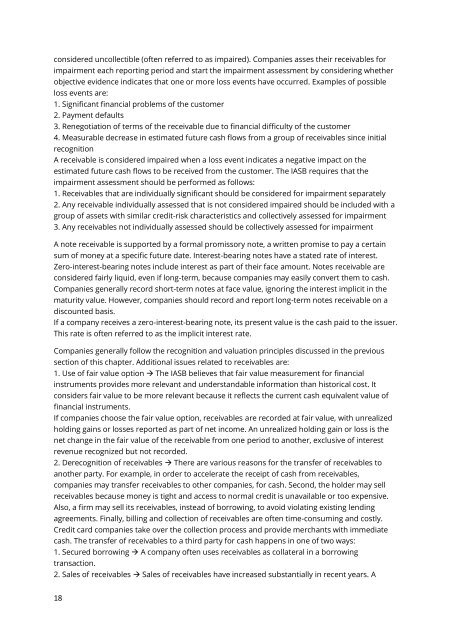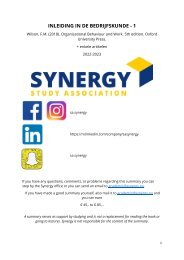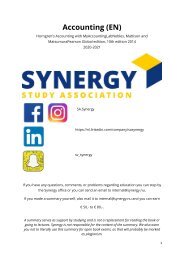You also want an ePaper? Increase the reach of your titles
YUMPU automatically turns print PDFs into web optimized ePapers that Google loves.
considered uncollectible (often referred to as impaired). Companies asses their receivables for<br />
impairment each reporting period <strong>and</strong> start the impairment assessment by considering whether<br />
objective evidence indicates that one or more loss events have occurred. Examples of possible<br />
loss events are:<br />
1. Significant financial problems of the customer<br />
2. Payment defaults<br />
3. Renegotiation of terms of the receivable due to financial difficulty of the customer<br />
4. Measurable decrease in estimated future cash flows from a group of receivables since initial<br />
recognition<br />
A receivable is considered impaired when a loss event indicates a negative impact on the<br />
estimated future cash flows to be received from the customer. The IASB requires that the<br />
impairment assessment should be performed as follows:<br />
1. Receivables that are individually significant should be considered for impairment separately<br />
2. Any receivable individually assessed that is not considered impaired should be included with a<br />
group of assets with similar credit-risk characteristics <strong>and</strong> collectively assessed for impairment<br />
3. Any receivables not individually assessed should be collectively assessed for impairment<br />
A note receivable is supported by a formal promissory note, a written promise to pay a certain<br />
sum of money at a specific future date. Interest-bearing notes have a stated rate of interest.<br />
Zero-interest-bearing notes include interest as part of their face amount. Notes receivable are<br />
considered fairly liquid, even if long-term, because companies may easily convert them to cash.<br />
Companies generally record short-term notes at face value, ignoring the interest implicit in the<br />
maturity value. However, companies should record <strong>and</strong> report long-term notes receivable on a<br />
discounted basis.<br />
If a company receives a zero-interest-bearing note, its present value is the cash paid to the issuer.<br />
This rate is often referred to as the implicit interest rate.<br />
Companies generally follow the recognition <strong>and</strong> valuation principles discussed in the previous<br />
section of this chapter. Additional issues related to receivables are:<br />
1. Use of fair value option → The IASB believes that fair value measurement for financial<br />
instruments provides more relevant <strong>and</strong> underst<strong>and</strong>able information than historical cost. It<br />
considers fair value to be more relevant because it reflects the current cash equivalent value of<br />
financial instruments.<br />
If companies choose the fair value option, receivables are recorded at fair value, with unrealized<br />
holding gains or losses reported as part of net income. An unrealized holding gain or loss is the<br />
net change in the fair value of the receivable from one period to another, exclusive of interest<br />
revenue recognized but not recorded.<br />
2. Derecognition of receivables → There are various reasons for the transfer of receivables to<br />
another party. For example, in order to accelerate the receipt of cash from receivables,<br />
companies may transfer receivables to other companies, for cash. Second, the holder may sell<br />
receivables because money is tight <strong>and</strong> access to normal credit is unavailable or too expensive.<br />
Also, a firm may sell its receivables, instead of borrowing, to avoid violating existing lending<br />
agreements. Finally, billing <strong>and</strong> collection of receivables are often time-consuming <strong>and</strong> costly.<br />
Credit card companies take over the collection process <strong>and</strong> provide merchants with immediate<br />
cash. The transfer of receivables to a third party for cash happens in one of two ways:<br />
1. Secured borrowing → A company often uses receivables as collateral in a borrowing<br />
transaction.<br />
2. Sales of receivables → Sales of receivables have increased substantially in recent years. A<br />
18
















